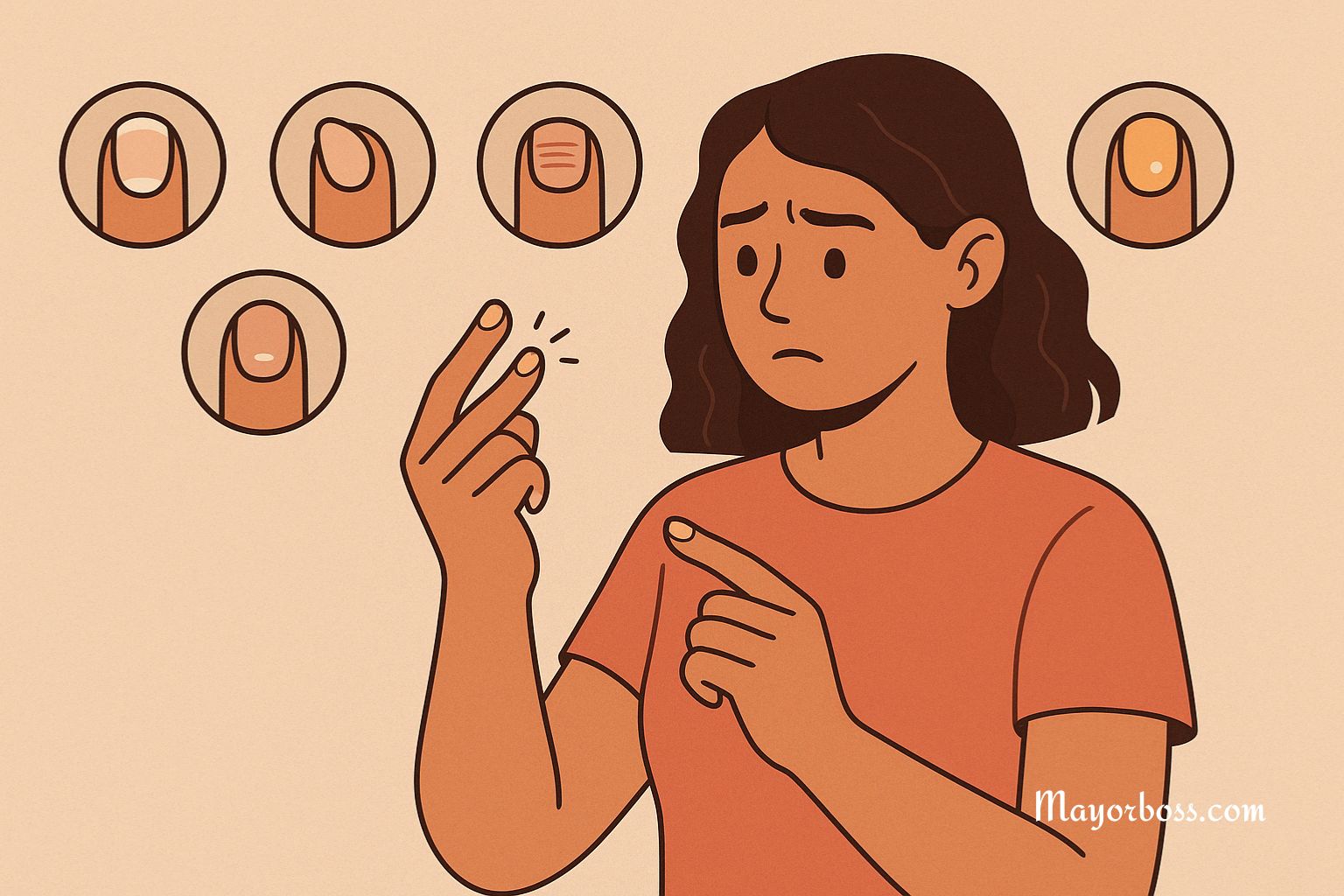Your Nails Can Reveal Nutritional Deficiencies—Here’s How
Your fingernails can do more than just complete your look—they can give important clues about your health. In fact, changes in nail color, shape, or texture may point to a lack of key nutrients. Though nails grow slowly, they can reflect deficiencies that develop over time. Paying attention to your nails can help you catch nutritional gaps before they affect other areas of your body.
Let’s explore what your nails might be trying to tell you about your diet and how to support nail health with the right nutrients.

What Healthy Nails Should Look Like
Before we look at signs of problems, it’s helpful to understand what healthy nails should look like. Normal nails are:
- Smooth, without ridges or pits
- Uniform in color (pinkish with a pale base)
- Slightly curved and strong, not brittle or overly thick
- Growing at a steady rate without peeling or flaking
Now let’s review how specific changes in your nails might signal nutritional deficiencies.
Pale or White Nails
Nails that appear pale or almost white may be a sign of iron-deficiency anemia. Iron is essential for making hemoglobin, which carries oxygen in the blood. Without enough oxygen-rich blood, the nail beds can lose their healthy pink color.1
Other signs of iron deficiency may include:
What helps:
Add more iron-rich foods like lean red meat, chicken, lentils, spinach, and fortified cereals. Vitamin C also boosts iron absorption, so include oranges, strawberries, or bell peppers with meals.
Spoon-Shaped Nails (Koilonychia)
Nails that curve upward at the edges and resemble a spoon may also be caused by iron deficiency, especially in more advanced cases. This sign often appears alongside fatigue and cold hands or feet.2
What helps:
Focus on iron intake through both diet and supplements, if prescribed. Be sure to follow your doctor’s guidance to avoid iron overload.
Brittle or Cracked Nails
If your nails split, peel, or break easily, this could signal a lack of biotin (vitamin B7). Biotin is important for healthy cell growth and supports the structure of nails.3
Other possible causes:
- Low levels of other B vitamins
- Dehydration
- Frequent exposure to water or harsh chemicals
What helps:
Eat more eggs (especially the yolk), nuts, seeds, salmon, sweet potatoes, and whole grains. If needed, biotin supplements can strengthen nails over time.
Ridged Nails
Vertical ridges (running from the base to the tip) are common with age.4 However, horizontal ridges or deep lines (known as Beau’s lines) may suggest a sudden interruption in nail growth, often related to a serious illness or nutrient shortage—such as zinc deficiency.
What helps:
Include zinc-rich foods like pumpkin seeds, chickpeas, cashews, and whole grains. Zinc supports healing and helps maintain skin and nail health.
Yellow Nails
Yellowing nails can result from fungal infections, but they may also signal a deficiency in vitamin E or selenium, both of which help protect cells from damage.5
What helps:
Eat more sunflower seeds, almonds, spinach, avocados, and Brazil nuts. These foods are packed with antioxidants and help improve nail appearance over time.
White Spots
Tiny white spots (called leukonychia) are usually not serious and often caused by minor nail trauma. However, persistent or widespread white spots may suggest a lack of zinc or calcium.
What helps:
Focus on zinc-rich foods, and include dairy products or fortified plant milks for calcium. Remember, calcium also works best with vitamin D, so safe sun exposure or a supplement may be helpful.
Soft or Bending Nails
Nails that are soft and bend easily might indicate a lack of protein, which forms the building blocks of nails (keratin). Low levels of magnesium may also contribute to weak nail structure.
What helps:
Include more high-quality protein sources like eggs, poultry, beans, and tofu. For magnesium, try leafy greens, dark chocolate, bananas, and nuts.
Dark Lines or Discoloration
Dark streaks or discoloration under the nail should always be checked by a doctor, as they can be signs of serious conditions—not necessarily nutritional issues. Do not ignore these changes.
When to See a Doctor
While nail changes can point to nutritional gaps, they may also reflect other health problems, such as thyroid disorders, kidney disease, or infections. If your nail changes are sudden, painful, or persistent, it’s important to seek medical advice.
Supporting Nail Health Through Nutrition
To keep your nails strong and healthy, aim for a balanced diet that includes:
- Lean proteins
- Healthy fats
- Whole grains
- Plenty of fruits and vegetables
- Enough fluids to stay hydrated
A daily multivitamin can also help fill small nutritional gaps, especially if your diet is limited. However, always consult your healthcare provider before starting supplements.
References:
- https://www.medicalnewstoday.com/articles/anemia-nails-vs-normal-nails ↩︎
- https://www.ncbi.nlm.nih.gov/books/NBK559311/ ↩︎
- https://ods.od.nih.gov/factsheets/Biotin-HealthProfessional/ ↩︎
- https://www.mayoclinic.org/healthy-lifestyle/adult-health/expert-answers/nails/faq-20058541 ↩︎
- https://www.medicalnewstoday.com/articles/322087 ↩︎
